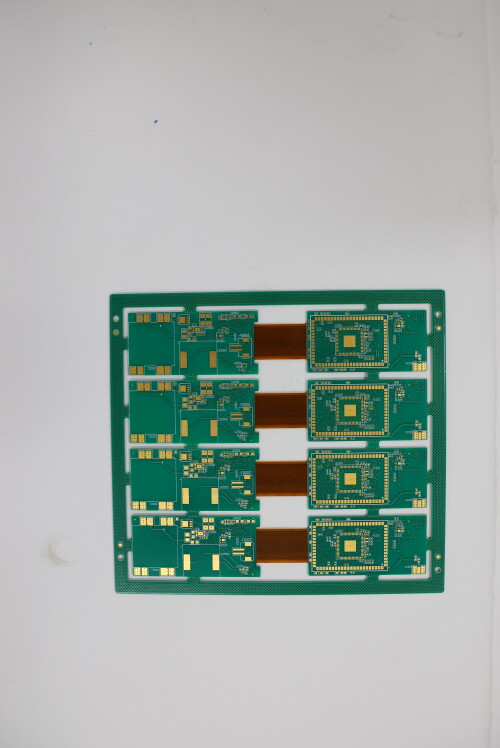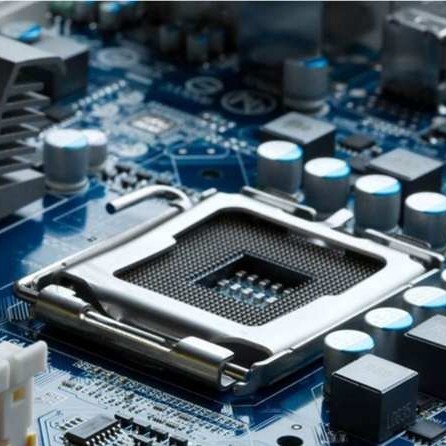Hitech Circuits Co.,Limited makes flexible and rigid-flex printed circuit boards for the electronic industry. Flex PCBs or Flexible PCBs are special types of printed circuit boards with the ability to bend and flex. These boards are typically transparent, thin, and made of a flexible, non-conductive substrate. The non-conducting material serves to insulate and protect the copper circuits on various layers of the board, while vias and plated through holes connect them electrically.
[email protected]
What is a rigid-flex circuit board?
As the name suggests, rigid-flexible PCB is a hybrid of Flex PCB and rigid PCB. The combination of the two types of boards takes advantage of the benefits they each offer, combining the versatility of flexible boards with the sturdiness of rigid boards. Rigid-flexible printed circuit boards are used in more complex mechanical designs, eliminating flexible cables and wiring and replacing them with integrated circuits.
By definition, a rigid-flexible PCB is a combination of rigid components that are connected together through interconnected flexible areas, where flexible materials are used throughout the PCB area.
Rigid components refer to those that have no bending requirements. Similarly, pth transmits connections from one layer to another as needed. Rigidity-flexibility can also adopt other technologies as needed. Human Development Index Unlike cost-effective flexible PCBS, rigid-flexible PCBS may be more expensive due to their complex designs.
Rigid-flexible PCB design can be used to eliminate or significantly reduce the need for bulky and expensive cable harnesses, thereby lowering costs and shortening assembly time. Just like pure flexible PCBS, a large number of rigid-flexible PCBS are used in aerospace applications, as well as in automotive and test equipment.
Rigid-flexible PCB is a hybrid circuit board that combines elements of flexible circuit boards and rigid circuit boards. The ultimate result is that the circuit board can be folded or continuously bent, and usually forms a curved shape or curve during the manufacturing process.
The flexible layer of a rigid-flexible PCB is embedded within the board and penetrates the rigid part of the PCB.
Benefits of Rigid-Flex
Rigid-flexible PCBS have several advantages that make them the perfect choice for your products, including:
Reduce space requirements through 3D capabilities
Impact resistance: Rigid-flexible PCBS can withstand high-stress environments
Enhanced reliability: Due to the reduced demand for solder joints or connectors, rigid-flexible PCBS are an excellent choice for products where connector or cable failures may be harmful
Rigid-flexible PCBS also have a simpler assembly process because they use fewer cables and connectors throughout the process
If your product requires a circuit board that needs to be folded during assembly, or if you are pursuing something highly durable and long-lasting, then a rigid-flexible PCB might be suitable for you.
Structure and Materials of Flexible PCB
A typical four layer flexible PCB will include:
Core layer - typically made of polyimide (PI) material, the core layer of a flexible PCB is usually yellow, but can also be transparent, white, or black. There are copper foil circuits on both sides of the iron core.
Copper foil layer - These foils are typical rolled or annealed copper, significantly increasing the ductility and ability of the plate to repeatedly bend. Manufacturers etch copper foil to manufacture necessary circuits. The copper thickness on each layer of flexible PCB is usually 3 ounces. Manufacturers can use optional adhesive layers to bond copper foil to the core. The presence of adhesives often makes flexible PCBs less transparent and typically results in darker colors.
Insulation layer - A thin PI layer isolates the copper circuit layer from the previous layer. The PCB industry refers to the two outermost insulation PI layers of flexible boards as cover layers, which are equivalent to the solder mask layers in ordinary PCBs.
Through holes - Each copper layer can have micro through holes or laser drilling, and is usually made conductive by electroplating. Vias are necessary for connecting copper circuits of different layers. Manufacturers can stagger or stack micropores to simulate typical blind and buried holes in ordinary rigid plates.
Stiffeners - In order to allow flexible PCBs to connect to connectors and other system interfaces, manufacturers provide flexible boards with reinforcing ribs. They laminated rigid components at the end of the flexible board as reinforcing plates. According to application requirements, manufacturers can make these optional accessories from PI, FR4, or stainless steel.
Applications of Rigid-Flex PCBs
Rigid-flex PCBs are transforming industries by enabling innovative designs and reliable performance. Here are some key applications:
Consumer Electronics
Smartphones, laptops, and wearable devices rely on rigid-flex PCBs for their compact size and flexibility. For example, a smartwatch may use a 6-layer rigid-flex PCB to integrate sensors, displays, and batteries in a curved form factor.
Medical Devices
In medical imaging equipment and implantable devices like pacemakers, rigid-flex PCBs provide reliability and miniaturization. Their ability to conform to complex geometries ensures seamless integration into small, biocompatible housings.
Automotive Systems
Rigid-flex PCBs are used in advanced driver-assistance systems (ADAS) and infotainment systems, where they withstand vibrations and high temperatures. A typical automotive rigid-flex PCB might feature an 8-layer design with ENIG (Electroless Nickel Immersion Gold) finish for corrosion resistance.
Aerospace and Defense
In satellites, avionics, and missile guidance systems, rigid-flex PCBs offer lightweight, durable solutions for harsh environments. Their ability to survive high-shock loads (up to 100G) makes them ideal for military applications.
Industrial Robotics
Robotic arms and machinery with moving parts benefit from rigid-flex PCBs' flexibility and durability. These boards enable compact connections in automated systems, improving efficiency and reducing maintenance.
Hitech Circuits Co.,Limited — PCB Manufacturing Partner
If you are looking for a manufacturing partner, look no further, as Hitech Circuits Co.,Limited is your one-stop shop for all your PCB needs. We design, fabricate, and assemble all types of PCBs for you, including flex and rigid-flex boards. We are the specialists in the fabrication of high layer count PCBs, prototypes, and in Electronic Manufacturing Services.
Canon Canon EOS R7 1/50s ƒ/5/1 ISO500 18/1mm — Plus de données Exif
- Manufacturer Canon
- Model Canon EOS R7
- Exposure Time 1/50s
- Aperture ƒ/5/1
- ISO 500
- Focal Length 18/1mm
- X Resolution 72/1 dpi
- Y Resolution 72/1 dpi
- Resolution Unit inches
- Color Space sRGB
- Orientation Rotate 90 CW
- Scene Capture Type Standard
- Exposure Bias Value 0/1
- Exposure Program Manual
- Exposure Mode Manual
- Metering Mode Multi-segment
- Flash No Flash
- White Balance Auto
- Exif Version 0231
- Date Time Original 2024-07-02 15:07:04
- Date Time Digitized 2024-07-02 15:07:04


